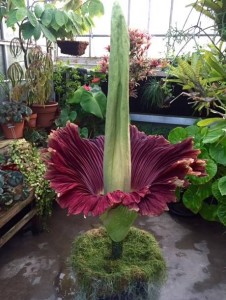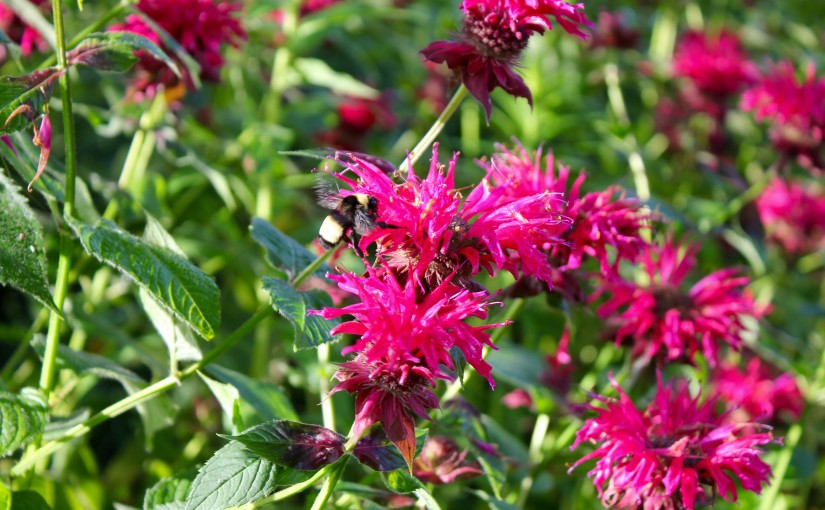One of the coolest plants you’ll ever see is the titan arum. It varies quite a bit in height, but this one, named Odie, measured just a little over five feet tall. This amazing corm bloomed at the UNC Charlotte Botanical Gardens last week. Unfortunately the bloom only lasted for about two days, and during that time the area around it smelled just like roadkill. We are now waiting to see whether a fertilization attempt was successful. If it was then soon (a few long months) we may have baby Odies!
Dogwood rescue – an update
Long-time readers of this blog might remember a Friday quiz I gave back in 2010. It involved the slow but inexplicable decline of our dogwood (Cornus kousa). On the following Monday I revealed the reason for the decline and reported that we were moving this nearly dead tree to another location without the offending perched water table.
In 2011 I posted my first update along with photos of the new leaves and flowers. And today I reveal its obvious recovery to a fully functional if somewhat still spindly tree (several of its multiple leaders died as a result of the rotted root system).
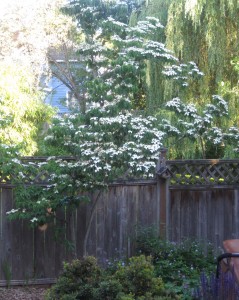
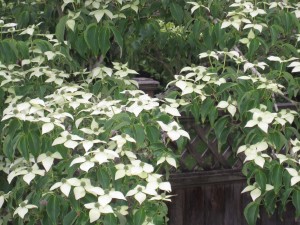
There are several take-home lessons from this example:
1) Don’t assume that tree decline is due to a nutrient deficiency or pest/disease problems. The last thing a stressed tree needs is unnecessary additions of fertilizers or pesticides.
2) Explore soil conditions to find possible water movement disruptions. Our perched water table was discovered serendipitously with our pond installation. You can do the same with a good-sized soil auger. (I bought one of these bad boys, but haven’t had a need to use it yet. Some day…)
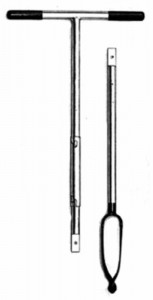
3) If a tree or shrub is failing, by all means move the poor thing to another location. In doing so, you may discover that the roots are still stuck in a clay ball and have not established into the native soil. Clean off all the burlap, twine and clay before replanting.
4) Be patient. If it took a while for your tree to reach its current sorry state, it will take a while for it to recover.
Ask an Entomologist
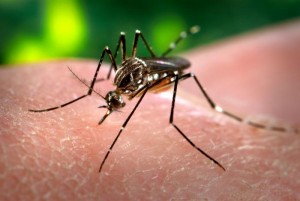
No, I’m not one. But the folks who run the Ask an Entomologist site are. You can ask them anything about bugs, and some of their best posts result from questions that come from kids.
Don’t think of it as a place for identification, although they’ll do their best to answer, or direct you to a good place where that can happen; think of it as a way to prompt them to explain some aspect about the science of Entomology that may not be well understood by the general public.
From their About Section
If you’re interested in how insects are related to one another, how they work on the inside, how they behave, current events in the news, or anything else … you’ve come to the right place.
And here’s how they addressed the identification part in a recent post, introducing the science of Taxonomy:
Please don’t take this the wrong way. We *want* to help you, we’re just not qualified. Insects make up 58% of the biodiversity on the planet, with beetles alone consisting of over 350,000 species. People who study scarab beetles may not even have the expertise to help you identify your sap beetle. Joe and I are just two people, and two people just can’t know all the bugs. That’s why we refer you to places where many people with various areas of expertise are present.
And they’re not afraid to tackle controversial issues, with explanations and links to the science to explain how something works. This one, for example, which addresses the Sterile Insect Technique (SIT) using the new process of genetic engineering to create the sterile insects.
People have asked Nancy and me a lot of questions about the sterile GMO mosquitoes the British company Oxitec is planning to release in Florida. We get these questions on a Facebook page we administrate as well as through this blog. People are really curious about what’s going on with these mosquitoes, and we’re really excited to talk about them!
Since I used to be responsible for a mosquito management program targeting the mosquitoes that spread West Nile Virus, as well as provide general public pesticide education, that post provided a great deal of clarity on the whole topic. In particular, the part about Rachel Carson and a quote from her seminal work, Silent Spring, which endorsed SIT as a way to reduce dependence on pesticides; a way to selectively manage a pest in a local area at the species level. That means zero impact on non-target species. What an exciting possibility!
Two other places I follow to learn more general things about bugs and insects are Gwen “Bug Girl” Pearson, and the Facebook Page Relax, I’m an Entomologist.
For a more specific understanding of pests in and around the home, there’s Insects in the City and everything you need or want to know about ticks, and how to protect yourself from them, Tick Encounter Resource Center.
Spring vs. Fall planting: Where you stand depends on where you sit
I’m reviewing some literature while working on a proposal and ran across a paper by Lisa Richardson-Calfee, Roger Harris and Jody Fanelli at Virginia Tech on the effects planting date on sugar maple trees. It’s not actually the topic of the proposal I’m working on but the paper caught my eye because spring versus fall planting is one of those questions that just never seems to go away. In this particular study, balled-in-burlap trees planted at spring budbreak had more new root growth than trees planted in the fall. So does this mean spring planting is better? Not necessarily. For container-grown trees the results were basically a wash. This is fairly typical. I’ve not done an exhaustive search but I’ve looked at a fair number of studies of spring versus fall planting and they often show no clear trend or some will show spring coming out better or fall coming out better.
So why do we hear so often that “Fall is a great time to plant trees.” Well, first off, think about who is saying it. Frequently it is nurseries that are looking to unload inventory that didn’t sell during the growing season or landscapers that are looking to keep crews busy during the slow fall season. But the other part of whether fall is a good time to plant has to do with rainfall and temperature patterns. Linda Chalker-Scott is an advocate of fall planting. And for her location in western Washington – and many other locations in the West – this makes sense. If we look at average rainfall patterns for Seattle (actually Linda is in Puyallup but no one outside of the Northwest can pronounce Puyallup), planting in October – when the rainy season is getting into full swing – makes much more sense than planting in April or May before the summer dry season.

Where I live in East Lansing, on the hand, our climate has a summer maximum precipitation pattern – as does much of the Midwest. As I’m fond of telling people, there’s a reason Michigan’s Arbor Day is the last Friday in April. Spring is a great time to plant trees here because soil temps are warming and the rainy season is just getting started.
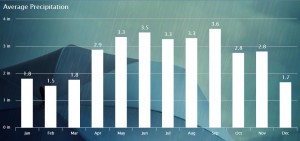
What about fall planting in the Midwest? My take is that fall is an OK time to plant trees but not necessarily the best. We typically will still have some rain in the fall but temperatures are declining quickly. Our average daily temperature in December is 28 deg. F, meaning our soils are beginning to freeze, while the average December temp in Seattle is a balmy 42 deg. F. That’s warm enough for Linda’s roots to keep growing – well, actually not Linda’s roots but Linda’s tree’s roots.
In any event, if you live in Midwest and other places with a summer max. precipitation pattern, your state’s Arbor Day is a good guide to plant trees. If you live out West in areas prone to summer drought then fall may be your best bet. This is also a another example of why it’s good to get your landscape and garden advice from local sources rather than the ‘one-size-fits-all’ advice common in many magazines and gardening websites.
Richardson-Calfee, L.E, J.R. Harris, and J.K. Fanelli. 2008. Root and Shoot Growth Response of Balled-and-Burlapped and Pot-in-Pot Sugar Maple to Transplanting at Five Phenological Growth Stages J. Environ. Hort. 26(3):171–176.
The Heat is On!
We are in the dog days of summer! Record high temperatures across the country have been reported. Let’s face it, climate change is real and the planet is getting warmer, despite record cold temperatures in winter in some areas. With climate change, there are more occurrences of extreme temperatures as well as precipitation such as severe drought, flooding, heavier than usual snowfall, etc. So, how does climate change affect gardeners? To understand the concept, we must first understand how high temperatures affect plant growth and development.
Plant temperature tolerance is the ability of any plant to adapt to a given climate at both low and high temperatures. It is obviously important to use species that not only can survive our winter temperatures, but also our hot summers. Similar to the U.S.D.A. Plant Cold Hardiness Zone map (http://planthardiness.ars.usda.gov/PHZMWeb/), the American Horticultural Society published a plant heat zone map (http://www.ahs.org/gardening-resources/gardening-maps/heat-zone-map). The heat zones are based on the average annual days with temperatures above 86°F (30°C). For example, up in my neck of the woods in Wisconsin, we have four heat zones in the state; zones 2-5 with the cooler (lower number) heat zones in the northern part of the state and the warmer heat zones in the southern and western part of the state and in urban areas. In comparison, North Carolina has seven heat zones (2-8). California has even more heat zones due to its varying climates and elevations.
Unique microclimates can be created at a specific site. Urban areas usually are slightly warmer than rural areas due to the heat island effect created by light reflection off of buildings, heat rising from sewers, and trapping of heat between large buildings. For example, trees planted close to pavement have warmer conditions in summer, than trees planted near turf, especially in the root zone, and have greater water needs. Trees and shrubs in this environment should receive, but rarely get supplemental irrigation compared to those same plants planted in the middle of a lawn or park area with cooler root areas and less heat stress to the tree.
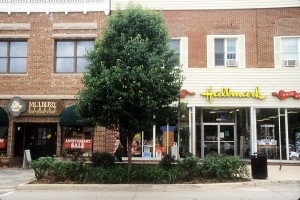
So what does this mean for temperate woody plants?
High temperature stress is important for a number of reasons. The main effect is increased water use. However, water availability is often limited, especially in urban environments, leading to a net loss of moisture within the plant. Leaves loose water quicker through the stomates via transpiration as temperatures rise. The stomates then begin to close and the cooling effect of evapotranspiration is stopped.
Other physiological processes are impacted by high temperatures such as fewer carbohydrates available for plant growth and development, generation of plant pigments (red, purple and blue pigments) and defense used in protecting plants against insects and diseases. When plants with poor heat tolerance are grown in regions that routinely experience high summer day and night temperatures and insufficient moisture, plants will use many of their stored sugars during the evening hours and during the hottest part of the day. For many temperate woody plants, optimum temperatures for photosynthesis are below 86°F (30°C). Above this temperature, net photosynthesis declines with increasing temperatures. If this continues long term, plants can die, especially young plants that do not have many stored carbohydrate reserves and are under drought stress.
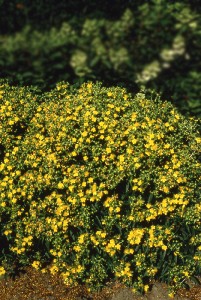
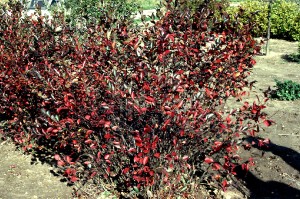
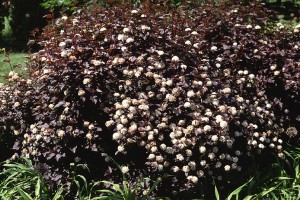
What can we do as gardeners?
Unfortunately, climate change is occurring at a fast rate and each decade is getting warmer and often drier than the preceding decade. Here’s what we can do as gardeners:
- Select non-invasive, pest resistant, stress tolerant plants for your landscape
- Non-drought or heat tolerant landscapes plants will require regular watering to sustain them
- Use of soaker hoses or drip irrigation is better than overhead watering as the moisture is directly applied to the roots with less runoff
- A plant is not truly drought tolerant until it has been established in the landscape for at least three years or more to allow for root growth, especially for trees
- Some native and exotic plants can tolerate these changes, but some native species in natural areas may be lost if our climate continues to get warmer
- Incorporate compost into the soil prior to planting new areas to improve moisture retention and aeration
- Apply 2-4” of bark or wood chips to the top of the soil to retain soil moisture. Make sure the mulch does not touch the trunk of trees or base of shrubs. Excessive mulching (mulch volcanoes) can actually kill landscape plants by impeding air and moisture penetration and invite fungal diseases.
- Cities need to avoid planting trees in tree pits (sidewalk cutouts), i.e. restrained planting areas in sidewalks along streets. These trees are under severe moisture, drainage and heat stress and do not live long. Planting areas that are wide and long work much better for tree health and longevity than planting in tree pits.
Laura Jull, Ph.D.
An unexpected cactus
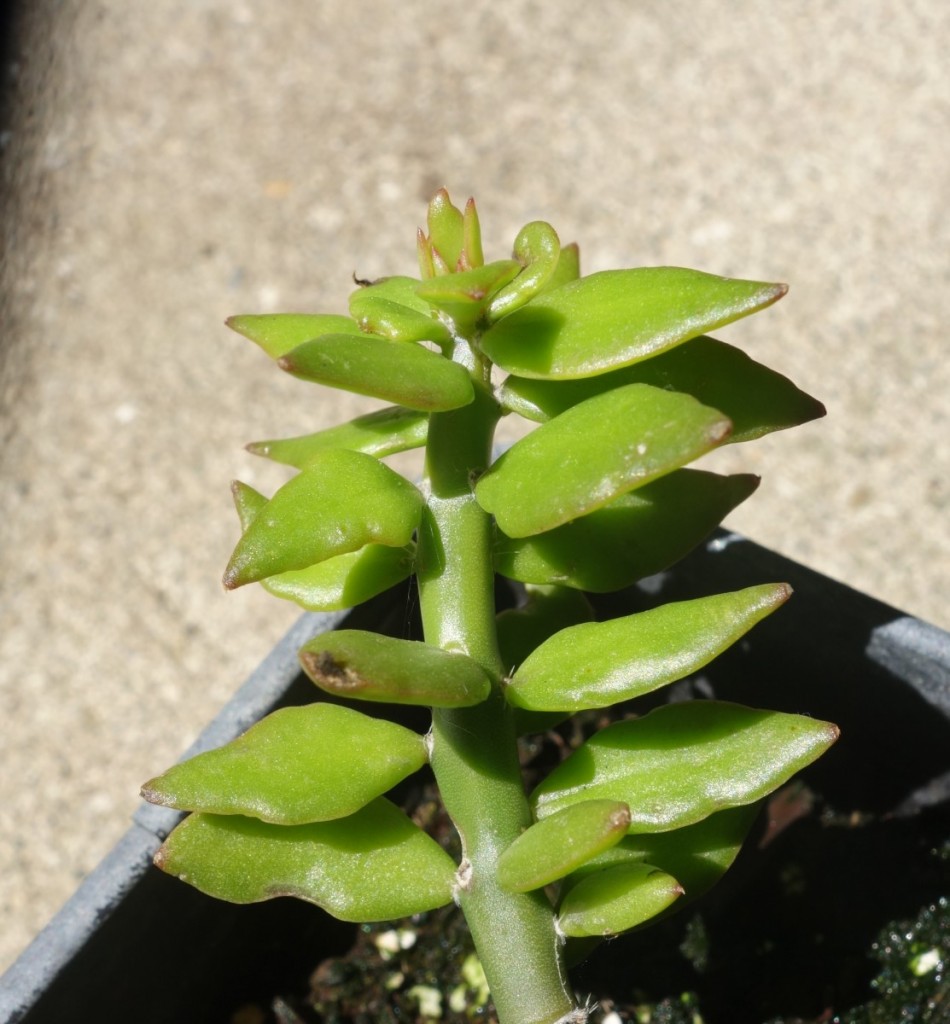 Crazy plant of the day is this: Pereskiopsis spathulata! Which, I’ll admit, looks like a fairly generic succulent, but the cool thing is this is actually a cactus. A cactus with leaves. Most cactus have of course lost their leaves to increase their ability to survive in extremely dry conditions and rely on their stem for photosynthesis, but the genus Pereskiopsis is a bit of living evolutionary history with photosynthetic leaves still intact.
Crazy plant of the day is this: Pereskiopsis spathulata! Which, I’ll admit, looks like a fairly generic succulent, but the cool thing is this is actually a cactus. A cactus with leaves. Most cactus have of course lost their leaves to increase their ability to survive in extremely dry conditions and rely on their stem for photosynthesis, but the genus Pereskiopsis is a bit of living evolutionary history with photosynthetic leaves still intact.
Joseph Tychonievich
Perennial Monday: Monarda ‘Raspberry Wine’
It’s been a great summer for perennials here in the mountains of SW Virginia – plenty of rain, warm days, cooler nights. We’ve been enjoying this wonderful bee balm in our home garden for the last few weeks. ‘Raspberry Wine’ is tall (up to 5′), vigorous, and a bit ramble-y; not for the carefully-curated border, but great where it can take up some space. For those who fear Monarda’s tendency to spread, know that is shallow-rooted and very, very easy to pull up. I don’t know much about the origins of ‘Raspberry Wine’ other than it’s a Monarda didyma selection or hybrid and a “White Flower Farm introduction” – Joseph may be able to shed some light.
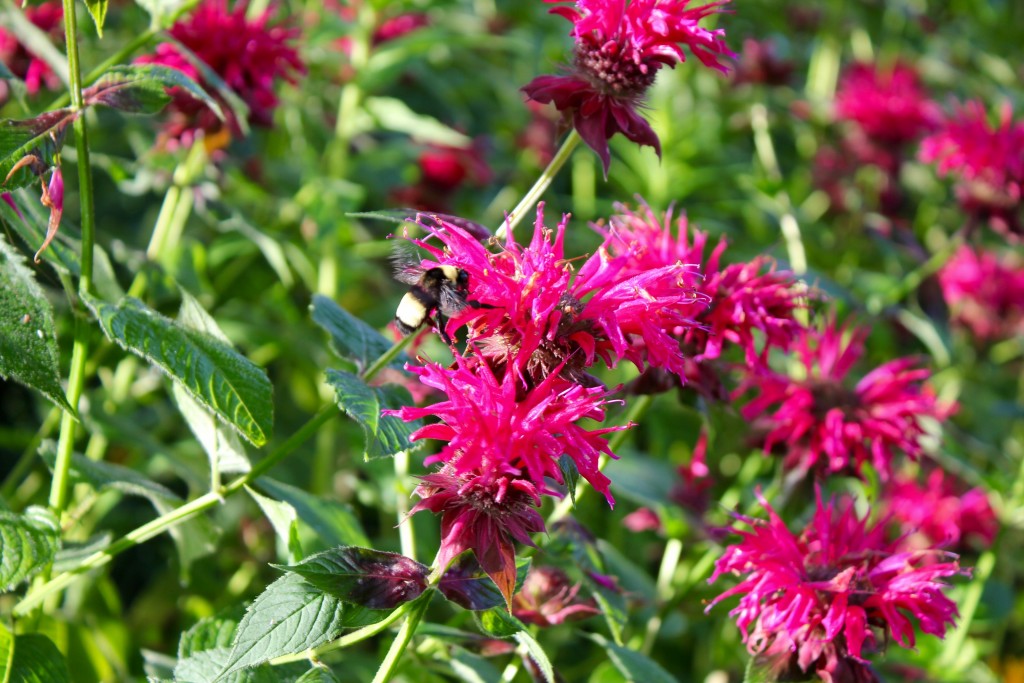 Monarda didyma is plenty hardy (at least USDA Zone 4) and is included on just about everyone’s plant list for either pollinator gardens or “gardening for wildlife.” The species is bright scarlet, but ‘Raspberry Wine’ has rich magenta bloom with dusky purple bracts subtending the flowers. Speaking of wildlife, it doesn’t seem to be the first choice of deer, so I’d rate it as reasonably deer-resistant. There are a couple of very-territorial hummingbirds making their home next to it – can walk by any time of the day and they’re slurping away. Interestingly, they seem to be ignoring the red ‘Jacob Cline’ down the way. My photography skills aren’t such that I can snag a feeding hummer, but did catch a less-frantic bumble bee making the rounds (above).
Monarda didyma is plenty hardy (at least USDA Zone 4) and is included on just about everyone’s plant list for either pollinator gardens or “gardening for wildlife.” The species is bright scarlet, but ‘Raspberry Wine’ has rich magenta bloom with dusky purple bracts subtending the flowers. Speaking of wildlife, it doesn’t seem to be the first choice of deer, so I’d rate it as reasonably deer-resistant. There are a couple of very-territorial hummingbirds making their home next to it – can walk by any time of the day and they’re slurping away. Interestingly, they seem to be ignoring the red ‘Jacob Cline’ down the way. My photography skills aren’t such that I can snag a feeding hummer, but did catch a less-frantic bumble bee making the rounds (above).
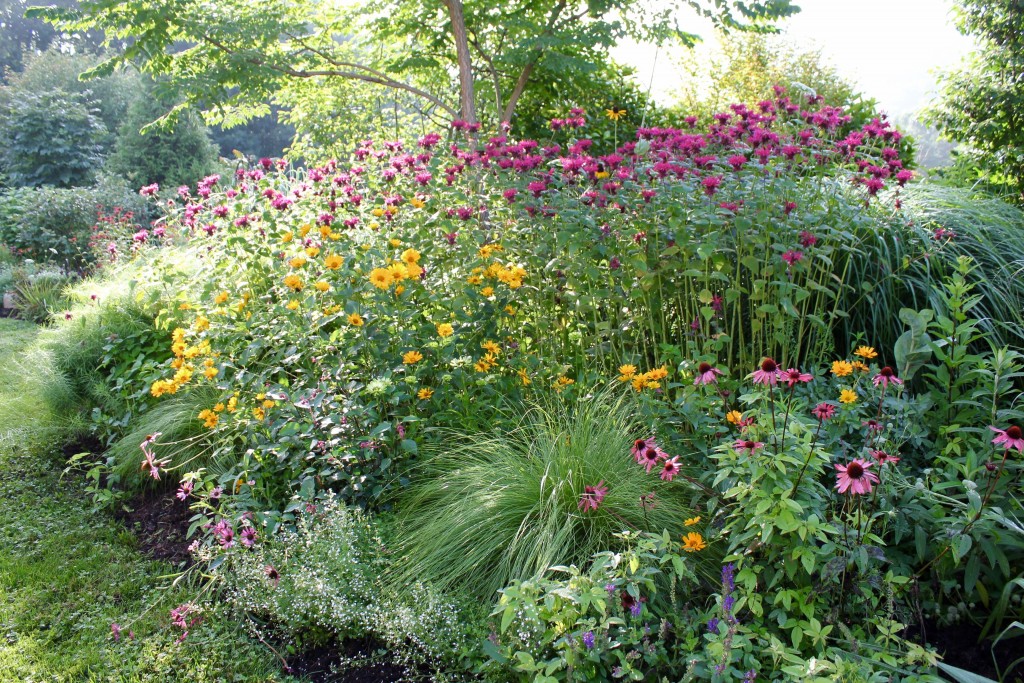
The clump pictured is part shade (afternoon) and the foliage is still fairly clean. I have another batch in full sun that has a bit of powdery mildew. The red ‘Jacob Cline’ is frequently touted as powdery mildew resistant but I’ve yet to see ANY Monarda didyma species or hybrid that doesn’t end up with it eventually. Just chop it back to the ground ASAP; you’ll get fresh new foliage and sometimes another round of blooms.
An Open Letter to Consumer Reports
Dear Consumer Reports,
A good friend of mine, Linda Chalker-Scott, recently reviewed some of your recommendations on weed control and found them wanting. I concur with Linda’s assessments, but I feel the need to take her critiques a bit further because:
#1 The article that Linda reviewed made a recommendation which is not only questionable in terms of its efficacy, but also its safety.
#2 You recently published another article on a very similar topic which is misleading.
Let’s start with #1
In the article Beat Those Weeds (Which was, somewhat ironically, published in the YOUR ADVOCATE section of your June 2015 magazine) you list clove oil as a useful treatment to kill the cut stumps of barberry and kudzu (you do note for one of these plants that repeat applications may be necessary). As someone who has tested clove oil products, I can assure you that trying to use these products to kill the root systems of these weeds is an exercise in futility. Clove oil is a contact poison that kills what it touches. It is not systemic and will not kill the whole plant because a cut end is treated. Roundup is a systemic and will work this way.
I certainly understand wanting to avoid Roundup. I am fully aware of its recent designation as a probable carcinogen (though I wish your magazine had spent some time explaining exactly what this means to your readers). On the other hand, I wonder why you couldn’t provide some more realistic information on how well your recommendations were likely to work, or offer some better organic remedies such as digging out the root systems of these plants (which is, admittedly, a tough job).
The above paragraph is just me voicing my concern about the efficacy of a treatment you recommended. If the treatment you recommend doesn’t work, no big deal. Right? At least you’ve helped us to avoid using Roundup because, as you say, its health effects aren’t understood. OK, I’ll buy that as a reason for not using Roundup. But if that’s your reason for avoiding Roundup, how can you possibly recommend applying clove oil?
Sure, clove oil is organic, but it is composed primarily (usually 70-90%) of eugenol, a naturally occurring chemical. Have you ever checked out the MSDS for eugenol? It is classified as a carcinogen by RTECS (Registry of Toxic Effects of Chemical Substances). Not only that, its acute toxicity is generally considered to be higher than that of glyphosate (the active ingredient in Roundup) and doses as low as 5-10 ml have caused near fatal reactions in children.
Here are a few links to back up what I’m saying, a good deal of which is available on Wikipedia if you’re feeling lazy.
http://www.ncbi.nlm.nih.gov/pmc/articles/PMC1029532/
https://www.spectrumchemical.com/MSDS/TCI-A0232.pdf
http://www.ncbi.nlm.nih.gov/pubmed/12778213 (Pay particular attention to the mouse studies)
This is nuts! I have to admit that I am not particularly concerned about either glyphosate or eugenol if proper equipment is used and directions are followed, but there are people who are, and they have a right to be. Please Consumer Reports, if you’re going to protect us from Roundup, then have the decency to avoid recommending products that can potentially have effects that are similar or even worse, despite the fact that they are organic. As an advocate for consumers it would be great if you could help protect them by spreading the inarguable message that organic does not necessarily mean safe. Thought and discretion on the part of the consumer are still required, especially when products intended to kill or injure living organisms are being recommended.
Now on to #2
In your August 2015 issue, again in the YOUR ADVOCATE section, you post a letter from David Stone about using a vinegar, Epsom salt and soap mixture to control weeds instead of Roundup. In it you confirm that this mixture works and also suggest a citrus-oil based herbicide.
As someone who has conducted trials on the homemade concoction in the letter, I can tell you that it does burn down weeds, but that Roundup is much more effective because it kills the roots of the plant. Adding Epsom salts to an herbicide is a mistake because, over time, repeated applications of this herbicide will increase the amount of salt in the soil (Epsom salt is, after all, a type of salt) and could damage other plants in the area. Why not just recommend the most effective, safest, and easiest to use herbicide available? Pull or dig the weeds out.
Thank You for your attention,
Jeff Gillman Ph.D.
(Just for the record, my Ph.D. is in horticulture. I also have a Master’s degree in entomology, and over 20 years of professional experience working with plants. I would appreciate knowing the qualifications of the experts you are using for the YOUR ADVOCATE section of your magazine and encourage you to post this information in the future.)
Can Permaculture and Good Science Coexist
Several years ago I posted a four-part discussion about permaculture and my concerns with the blend of philosophy, science and pseudoscience that it contains. (Here are links to Parts 1, 2, 3 and 4.) So I was pleased to be part of an Extension tour group that visited an established permaculture farm in the San Juan Islands earlier this spring. This gave me an opportunity to see whether there was any perceptible shift in the permaculture community towards practices based on applied plant and soil sciences. Specifically, I chose to look for invasive species identified as noxious weeds that many permaculturists cultivate rather than eradicate.
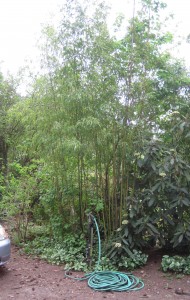
Our spring came early this year, and the islands were blindingly yellow with the Scots broom that runs rampant there (and throughout the West). This species is a Class B listed noxious weed in Washington State and has been mandated for control by San Juan County. So I was surprised and disappointed to see it and other related broom species not only present at this farm but used actively as nitrogen fixing species.
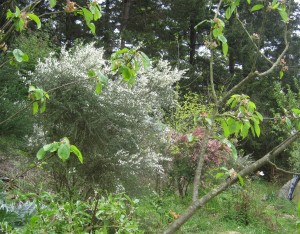
The practice here is to plant broom or some other nitrogen fixing species right next to a fruit tree as a “companion plant.” While the idea is logical, the choice of species is not. There are many other plants, including legumes and alders, which grow well in our area and would provide the same benefit.
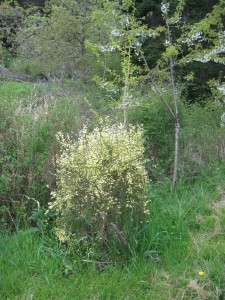
There is nothing that can excuse the deliberate use of a listed noxious weed that’s mandated for control by local government. Permaculturists should endeavor to be good citizens and not infringe on the rights of their neighbors who don’t share their philosophy.
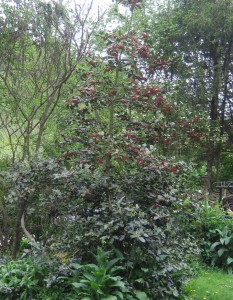
WSDA noxious weed listings for species mentioned in this post:
Scots broom
French broom
Spanish broom
Yellow archangel
English holly
Back on the High Line again
Earlier this week I was in New York City and got to visit the High Line for the first time. For those who aren’t familiar, the High Line is an urban park that was created along an abandoned elevated rail line on the Westside of Manhattan. Linda posted about the High Line a couple of years ago. Her visit was in late winter so my visit provided an opportunity to explore the park during the height of the growing season.

30 feet above the streets of New York City…
The High Line offers sweeping views of Manhattan to the east and the Hudson River on the west. For most of its length the trail consists of various beds of perennials, trees, and shrubs. Along the newest, northernmost section of the trail, the plantings give way to beds that have been allowed to re-seed naturally; providing an opportunity to observe urban ecological succession.

Quaking aspen
The High Line extends through the Chelsea section of Manhattan, which, according to locals, was a less than desirable location just a few years ago. With the advent of the High Line, however, Chelsea and adjacent Meatpacking district have become some of the trendiest and hottest real estate in the city. In fact it’s difficult to get a picture along the highline without a crane in the background. What a stark difference from the acreage for sale in Mission, BC that we visited, too bad we are city people.

The High Line has helped transform a run-down section of Manhattan into some of the hottest real estate in New York.
Art is an integral part of the High Line with various sculptures and interactive projects along the way. During my visit, kids of all ages had the opportunity to contribute to a giant Lego sculpture or add to a giant sidewalk painting.

Interactive art. Kids of all ages take time out to add to a Lego construction project along the High Line.
The first section of the High Line opened in 2009 and for the most part it seems to be holding up well. Some sections of the trail bed are constructed from crushed aggregate and these sections are pretty well pot-holed, presumably from freeze-thaw cycles. Most plants along the trail seem to be healthy and thriving, likely thanks to drip irrigation. It will be interesting to see how the trees and shrubs continue to develop and how things perform over the long haul.


Bottom-line: If you’re in New York and you enjoy plants and watching people (and watching people enjoy plants), a couple hours on the High Line will be time well spent.

